« Chronique:Canon Fodder - Fourward Unto Dawn » : différence entre les versions
Page créée avec « '''ISSUE 134''' 1000px|center <u>'''[https://www.halowaypoint.com/authors/alex-wakeford Alex Wake… » |
m Hawk a déplacé la page Canon Fodder - Fourward Unto Dawn vers Chronique:Canon Fodder - Fourward Unto Dawn |
(Aucune différence)
| |
Version du 11 novembre 2022 à 20:58
ISSUE 134
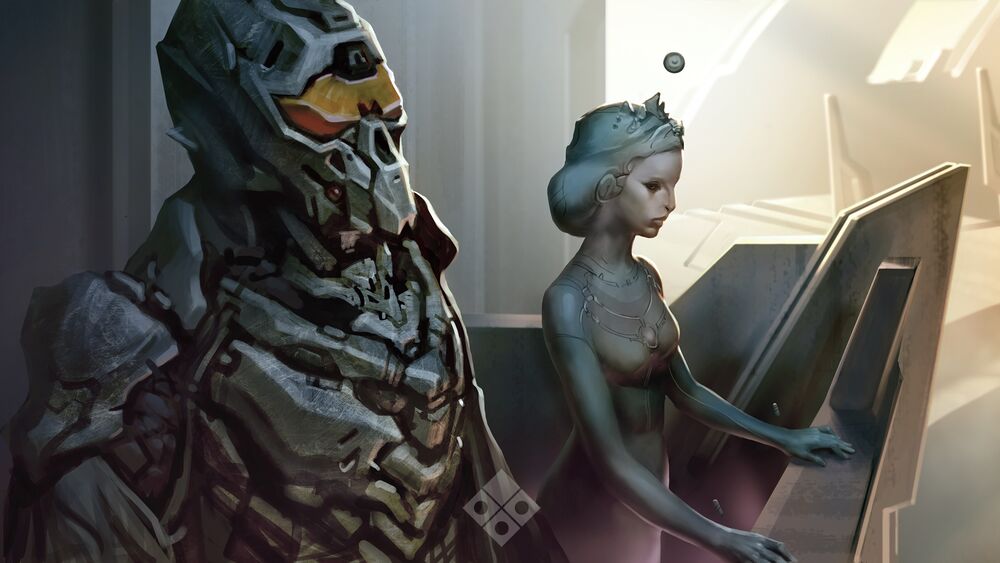
Alex Wakeford
11/11/2022
Welcome back to our penultimate Canon Fodder issue of the year!
Halo 4 turned ten years old, we announced a new novel about a certain fan-favorite Forerunner at the Halo World Championship 2022, and, oh yeah, the Winter Update has arrived for Halo Infinite, bringing with it some new map lore and a round-up of Season 2 Intel.
Let's get straight into it!
Canon Fodder LIVE 2022
The Halo World Championship 2022 was not exclusively an esports event, as it featured a dedicated stage which played host to a number of community and dev-led panels to make for something that was closer to a Halo Fest or Outpost Discovery-style experience.
Amongst the festivities, we did a Canon Fodder LIVE panel featuring myself, Jeff Easterling, Jeremy Patenaude, and iconic community guest HiddenXperia.
Since we were at a multiplayer event, we discussed Halo media that we think is specifically good for folks to get into the expanded universe, the stories around some of the multiplayer maps throughout the series, and then we had an announcement we'll definitely talk a bit about next…
In case you missed the panel, check out the VOD below!
Halo: Epitaph
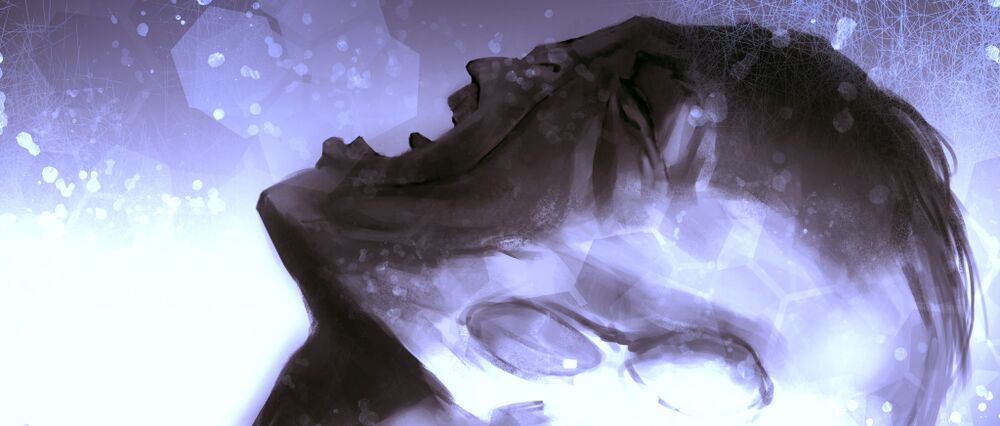
At the end of the Canon Fodder LIVE panel, we announced Kelly Gay's next novel, Halo: Epitaph, which will mark the return of the Ur-Didact within its pages.
This greatly missed figure has been absent from the Halo universe for… a little while, you could certainly say, and Epitaph will pick up on his story following the events of Halo 4 and the “The Next 72 Hours” arc of the Halo: Escalation comic series.
We will have more to say about Halo: Epitaph in the future, but as the tenth anniversary of Halo 4 has arrived, we thought this was an opportune moment to announce the novel's existence and its focus on the Didact.
Within this domain, you can certainly anticipate the four horsemen of pre-release features later down the line: the official book description, cover art, an interview with Kelly, and some official previews.
But, for now, just remember: You are what you dare.
Halo 4 - Tenth Anniversary
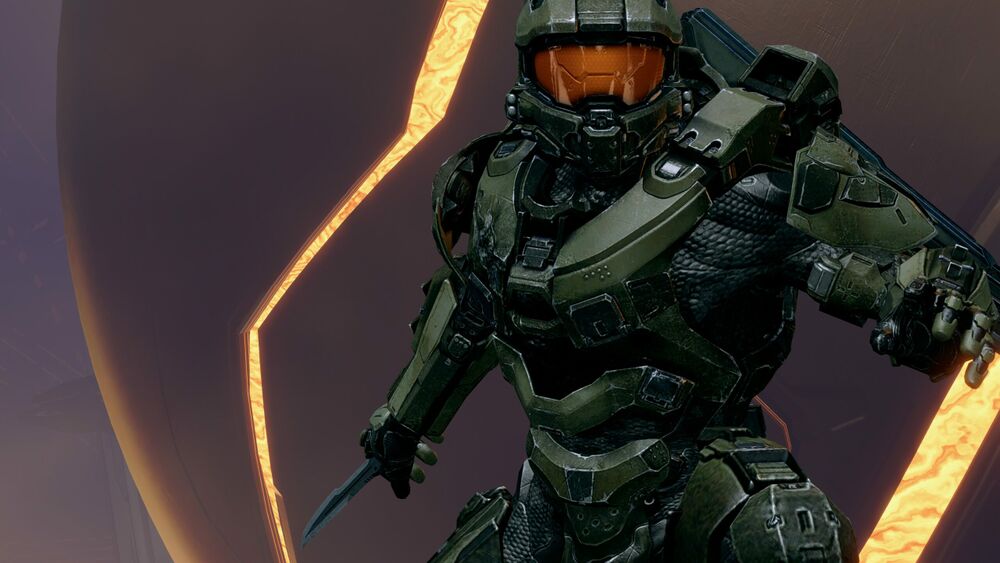
If you can believe it, this year marks the tenth anniversary of Halo 4.
This, I think, is the anniversary that makes everybody feel old. I myself was 18 when Halo 4 released, which is probably something of a “middle ground” age, as there was a whole generation of newcomers to the series who were ten years younger than that, and many grizzled ancients who were ten years older.
It's a hell of a landmark, both for the series and the studio, as this was 343's own debut mainline Halo game, and we wanted to celebrate the occasion accordingly.
Many of you may remember Halo Fest 2011, which marked the 10-year anniversary of Halo. Steve Downes and Jen Taylor met in person for the first time before going on to record Halo 4 together; Halo: Combat Evolved Anniversary was just months away from bringing the original game to the Xbox 360 with a shiny new coat of paint, animated Terminals, new (old) maps for Reach, and more…
In the midst of those aforementioned festivities, there was a little tease of what was to come in 2012 as an animated concept art trailer for Halo 4 was showcased.
This trailer aimed to communicate some of the mood and tone that Halo 4 was building on as its foundation, with Requiem as its central “character.” The return of the Master Chief and Cortana would have us delving into the depths of a Forerunner shield world built long before their civilization had even conceived the world “Halo,” and awakening an ancient presence within.
It was in the spirit of this trailer that, for the tenth anniversary, we wanted to create something of a “successor” to that original piece, showcasing how the concept art was ultimately realized into a stunning new game world that pushed the Xbox 360 to—and beyond—its limits.
Return to Requiem once more, accompanied by Neil Davidge's spellbinding track “Legacy,” conveying the ethereal tragedy of the Forerunners through Claire Tchaikowsy's soul-rending vocal performance.
And that's not all!
We've also put together a retrospective blog on Halo 4, featuring several fine folks involved in various roles in the development of the game.
But it's Neil Davidge who really brings the whole piece together as he recalls how working on the soundtrack for Halo 4 was what brought him and his wife Claire together, and how their son is turning ten-years-old alongside the game.
Give the blog a read here: Halo 4 | Tenth Anniversary
Fireteam Shadow
Let's keep the Halo 4 ball rolling with the Spartans of Fireteam Shadow.
Over the last year, you've become a lot more acquainted with Fireteam Shadow. You recovered Bonita Stone's enhanced shield module after finding her corpse in Halo Infinite and learned more about what she and the other Spartans were up to in the audio logs; you followed the movements of Stone and Nina Kovan in their fight for survival against the closing fist of the Banished on Zeta Halo in Halo: The Rubicon Protocol.
You may have even sent them to war on a much smaller scale in Mega Bloks form…
But Fireteam Shadow's origins go back to even before Halo 4 released.
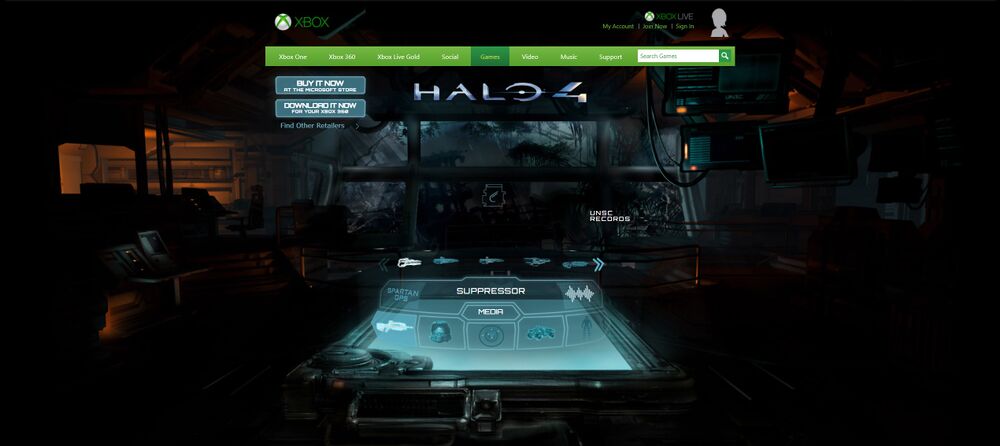
During E3 2012, a promotional Xbox website for Halo 4 launched with various interactive features that allowed you to learn more about the weapons, vehicles, characters, and settings of the game. Taking place on the bridge of the UNSC Infinity, which was forced down to Requiem's inner-surface by a gravity well, the site hosted about ten minutes of background audio set during this point in the campaign. Fireteam Shadow report to the flight deck as movement is detected outside the ship.
You can find an archived version of that old promotional site here. The audio can be heard in the background upon accessing the site.
For those of you interested in their GEN2 armor configuration circa 2557-2558:
- Shadow One, Horatio Fry – GOBLIN-class Mjolnir
- Shadow Two, Nina Kovan – GUNGNIR-class Mjolnir
- Shadow Three, Bonita Stone – RECON-class Mjolnir
- Shadow Four, Jason Kidman – OPERATOR-class Mjolnir
(Note, of course, that a team's callsigns are not static, but can change due to operational priority on any given mission.)
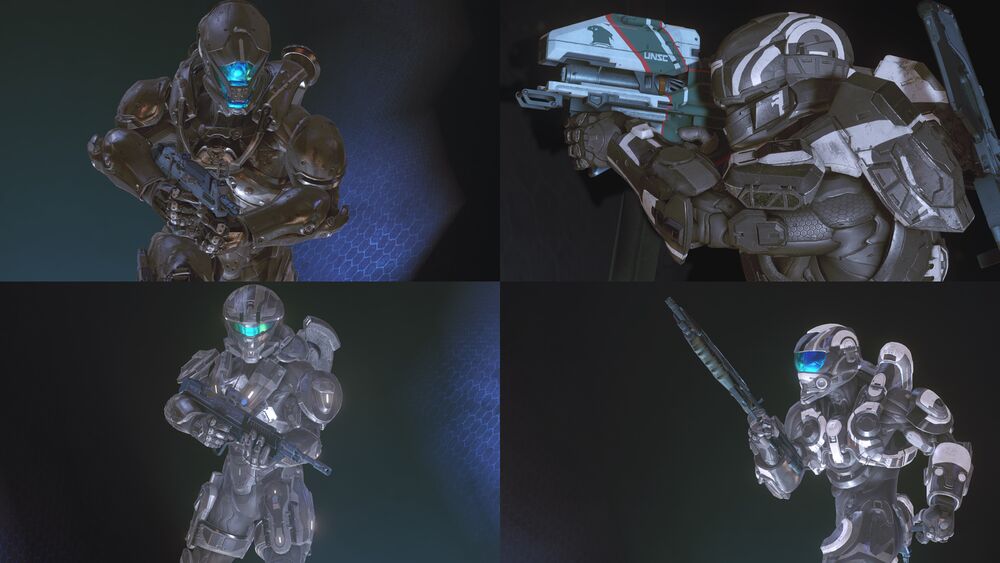
This squad has been with us for the last decade, in (appropriately enough) the shadows of all sorts of fiction. Technically speaking, they're actually the first Spartan-IV characters to appear in the Halo canon.
And that brings us to a very specific appearance they make with their in-game debut in Halo 4…
Operation: VERTICAL UMBRAGE
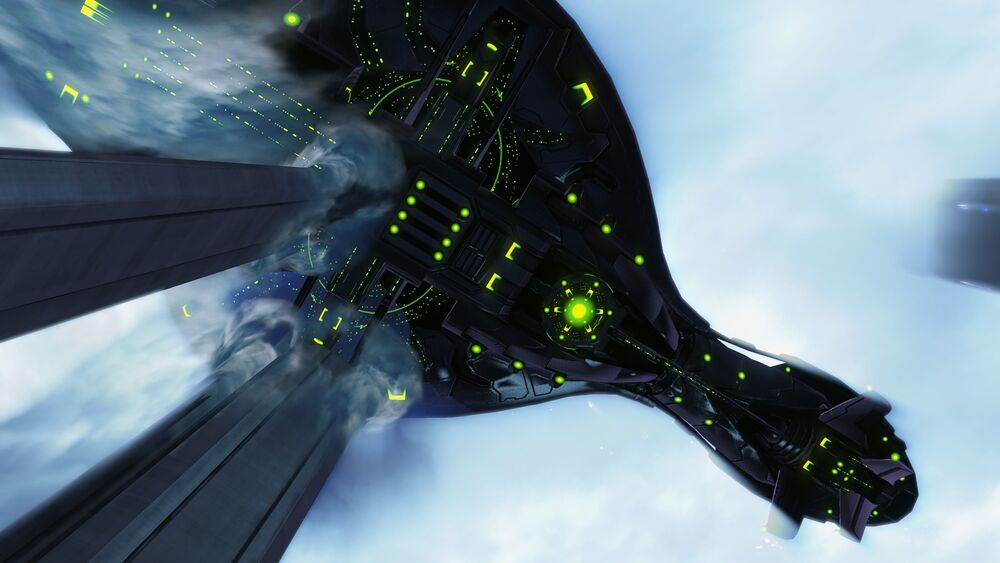
Fireteam Shadow appeared in 'Halo 4’s Spartan Ops campaign, specifically in the mission “Everything Has Gone Wrong” (Episode 5, Mission 3).
In this mission, Fireteam Crimson must protect a science team at Requiem's “Refuge” site from a group of Covenant zealots known as the Silent Blade. A Zanar-pattern light cruiser, Panom's Canticle, hangs in sky over the site and its surrounding jungles, and Fireteam Shadow are called upon to infiltrate the ship and destroy it from within.
We've never seen that part of the mission from Shadow's perspective… until now.
In a new online short story, we follow Spartans Horatio Fry, Nina Kovan, Bonita Stone, and Jason Kidman as they assault Panom's Canticle and face its shipmaster, Ryn ‘Alun.
Read Halo 4| Vertical Umbrage here!
The Sublimation of Charum Hakkor
While we're looking back on Halo 4, we thought it'd be good to crack open the vault of concept art from that era and show you some stuff you've likely never seen before. In fact, you've already seen one in this article...
I say you've likely not seen these before because, in fact, some of these pieces actually do appear in Halo 4. When the Master Chief meets with the Librarian, you can see very brief impressions of some of these images (we're talking a couple of frames here, so go through at 0.25x speed and you may catch them) which showcase the subjugation of the Ancestors on Charum Hakkor, the political center of the human-San'Shyuum alliance.
Throughout development, innumerable pieces of concept art get created for a variety of purposes, some of which never see the light of day for a variety of reasons. One example is Faber, the Master Builder, whose face was finally depicted in the Halo Encyclopedia earlier this year. Concepts of that character have actually existed for a decade, and the encyclopedia presented us with an impactful opportunity to use it.
With Halo 4's tenth anniversary here and the Didact set to feature in the Epitaph novel, this also seemed like a good opportunity to showcase some “new” art that was made in collaboration with our awesome partners at The Sequence Group, whose work you'll no doubt be familiar with from the Terminals for the “Anniversary” titles and Halo 4.
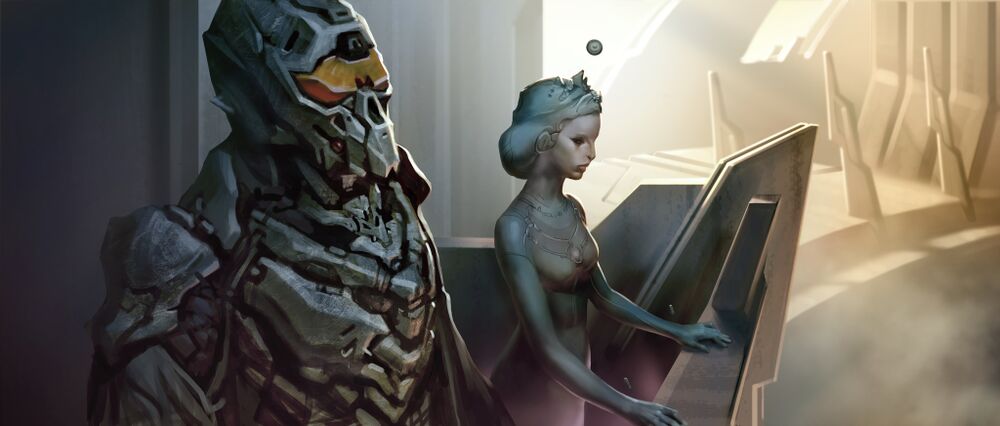
The Librarian and the Didact had first met on Charum Hakkor, the political center of the human- San'Shyuum empire. The final battle of Charum Hakkor had broken the human-San'Shyuum alliance and destroyed the last reserves of human resistance. That battle had been notorious, a great victory—but from the point of view of Mantle orthodoxy, of course, supremely disgraceful.
Victory did not bring joy for the Didact.
[Halo: Cryptum, p. 111]
One of the core narrative elements of Halo 4 was its Terminal storyline, which expanded on several aspects of the backstory about the Didact, the Librarian, the Ancestors, and the final movements of the cataclysmic war with the Flood that would drive the Didact to madness.
Charum Hakkor was the key strategic victory for the Forerunners against the Ancestors which, from the humans' point of view, was effectively the ancient equivalent of the fall of Reach.
This battle would last for fifty-three years. Part of the reason for this span of time was because, as the Didact recalls in Halo: Cryptum, the Ancestors made Charum Hakkor the center of their empire in order to be close to one of the greatest known collections of Precursor structures in the galaxy. The ancient, inert, and seemingly immortal star roads proved immensely valuable in fortifying the humans' position—even while under siege. Cities, energy towers, and defense platforms covered these constructs like ivy on great trees…
But Charum Hakkor would be cut off from the rest of their empire, preventing reinforcements and supplies from being brought in, but even in such dire circumstances the Lord of Admirals—commander of the Ancestors' forces—was able to match wits with his greatest opponent, the Didact.
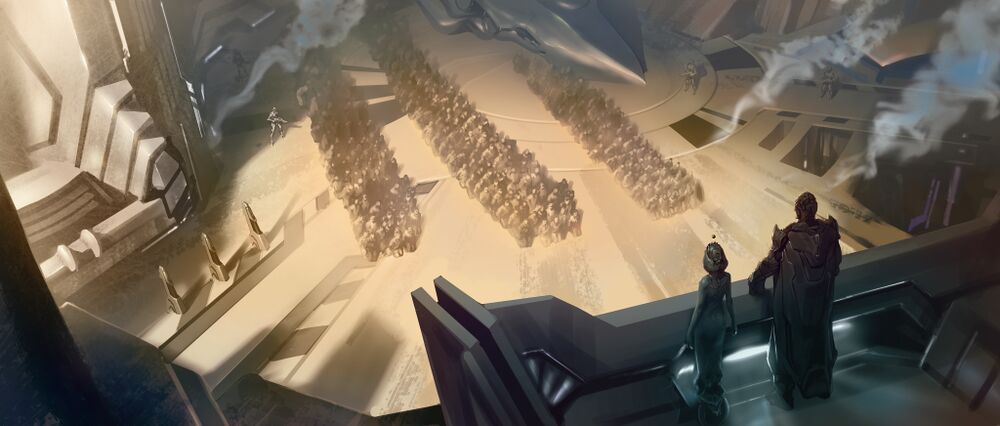
“The final Forerunner assault was staged from seven portals opened at one-hour intervals to disgorge the massive fleet of the Didact himself, along with his finest commanders, many of them veterans of the battles that had been fought from our colony worlds along the outer rim to Erde-Tyrene itself.
[Yprin] Yprikushma and a special forces team of seven thousand warriors and seventy vessels were assigned to protect the timelock that contained the Primordial.
[…] Forerunners captured the timelock and the Primordial. Yprin was withdrawn against her fervent objections— this much I heard. I also heard that she had hoped to be captured by the Forerunners themselves, so that she could warn them about a fate you would not wish on your worst enemy. To warn them about what the Primordial had told her.”
[Halo: Primordium, p. 240-1]
In the end, a secret deal was made between the Forerunners and humanity's allies, the San'Shyuum. Knowing that their defeat was inevitable, the San'Shyuum agreed to compromise Charum Hakkor's security, enabling the Forerunners to break through, and in exchange their fate would be to be quarantined to their home system, leaving the humans to face a far worse punishment.
As the surviving humans were gathered at Citadel Charum, the greatest of the planet's Precursor structures, the wounded and dying were lined up in countless rows of beds. Though they shed their uniforms in order to conceal their identities and ranks from the Forerunners, the Didact found his adversary, the Lord of Admirals, and confided in him what was to become of his people—and his fears of the war to come against the enemy the humans had truly been fighting. The Flood.
The Builder-led Old Council then sanctioned use of the Composer after the Librarian managed to convince them to spare their species from extinction, insisting that they may hold vital information about the alleged “cure” to the Flood.
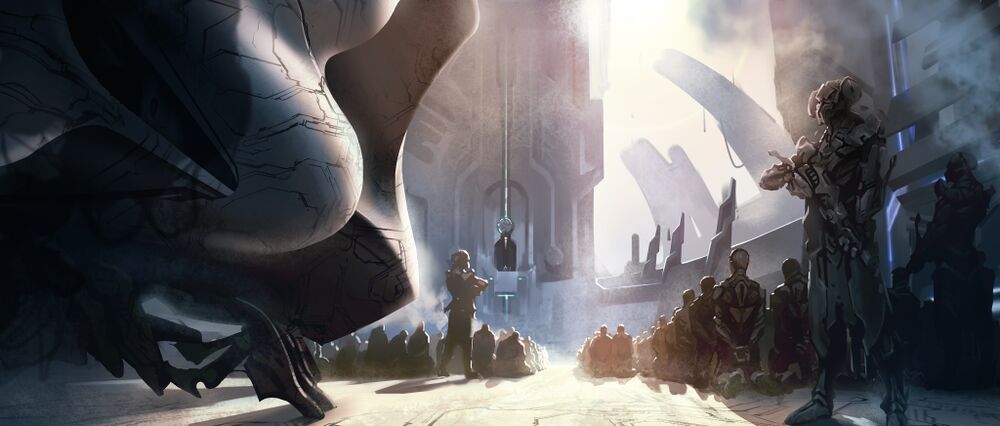
“As the humans devolved, the Composer-gathered personalities and memories of their fellows at Charum Hakkor would be holographically stored within their changing flesh. Not active, but dormant—thus avoiding the consequences of Composer decay.
Each devolved human would in effect carry the memories of tens of thousands of their kind, preserved for future study and investigation—and passed along to their offspring.
Those same memories and personalities would also be transferred to machine storage and subjected to constant rote interrogation—creating a library of enslaved ghosts subjected to mechanized torment for thousands of years to come. Thus, the Council believed, the secret to human resistance to the Flood would eventually be found.
Our perverse nod to the Mantle exhibited cruelty far beyond simple extinction. The Builders had gained practically everything they wished for. But that did not stop another and very different war from breaking out—between my husband and the Master Builder.”
[Halo: Silentium, p. 43]
Though the outcome of the battle of Charum Hakkor seemed like a great victory for the Didact, the truth was that this was the event that marked the beginning of the end for the Forerunners.
All twelve of the Didact and Librarian's children, who chose the Warrior-Servant's path, following in their father's footsteps, perished during the war with the humans. The political conflict that was to ensue over defensive measures to be taken against the Flood wrought the creation of Mendicant Bias and Halo, the first exile of the Didact, and the final dismantlement of the Warrior-Servant rate by the Builders.
And the Primordial would be unleashed from its timelocked prison on Charum Hakkor, where it would be brought to Zeta Halo and go on to become the central intelligence of the Flood—the entity we would come to know as the Gravemind. And all this misery was but sweetness for its grinding mill.
These illustrations capture a pivotal turning point in both the Didact's life and the history of the galaxy itself, and you can certainly expect this to be relevant in some ways to the personal journey the Didact undertakes in Halo: Epitaph.
If there's ever been a time to crack open the Forerunner Saga for a read (whether it's your first time through or, like me, the hundredth), it's definitely now…
Maptaculore, Part 4
With the Winter Update having arrived in Halo Infinite on November 8, we've seen the addition of two new maps: Argyle and Detachment.
If you've not had a chance to play on them yet, that's, y'know, a thing you should absolutely go and do right now! The Winter Update is free and brings with it a slew of awesome new content, but if you need a little more convincing then take a look at our map flythrough video (feat. a really cool new mode to boot).
Naturally, this means it's time for, fittingly enough, our fourth “Maptaculore” section (Maptacu-four?) where we explore a little bit of the backstory around these maps and how exactly they fit into the Halo universe.
We've previously explored the other maps in Halo Infinite in Issue #122 (“Legendary Endings”) and Issue #133 (“Foundations”) for the multiplayer spaces that shipped with the game, and Issue #127 (“Lore of the Jungle”) for the maps added in Season 2.
Argyle
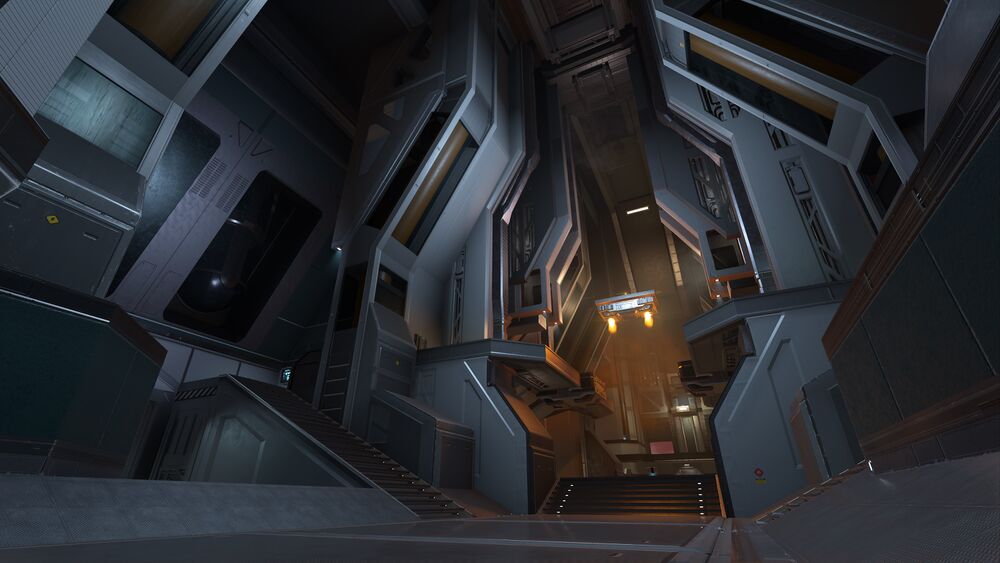
Defense contractors in the aerospace industry have continued to grow their use of military simulation software, leveraging the robust scenario-geometry engines to rapidly prototype full-scale ship designs and refit upgrades, something the eventual crew of the UNSC Argyle Gift will no doubt appreciate.
Detachment
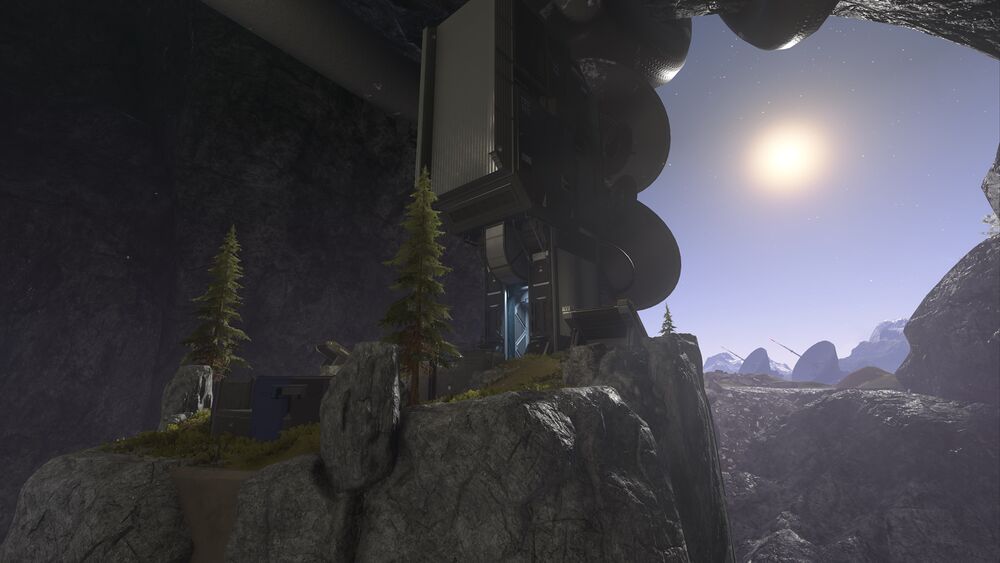
With new threats emerging as others subside, once-dormant UNSC facilities like the R9 Schuldt Complex are beginning to return to life, their halls once more teeming with activity and ingenuity, giving renewed purpose to their residents.
Season 2 Intels
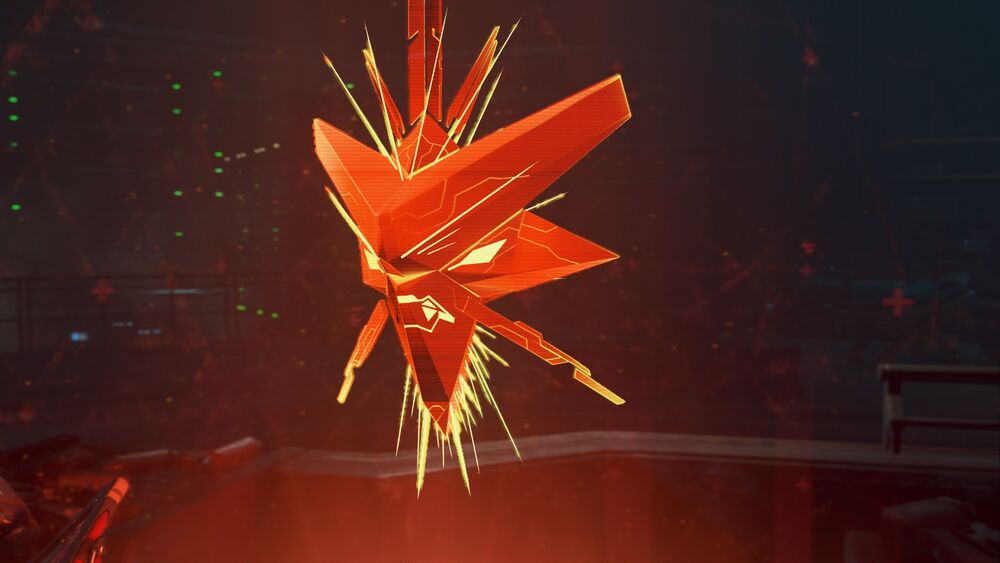
Throughout Season 2 of Halo Infinite, we released a series of additional Intel pieces that connected to peripheral elements of the season's story. The intent behind these bite-sized lore morsels is to provide breadcrumbs of intrigue and insight into various aspects of the ongoing narrative, such as in Season 2's case, various items concerning the Banished AI Iratus and Spartans Hieu Dinh and Sigrid Eklund. In some ways they are akin to some of the “data drop” style fiction fragments that we've featured on Waypoint in the past.
Of course, one of the main differences is that this newer breed of Intel pieces can be found in-game (in the MOTD carousel which can be accessed from the main menu) as well as the web (on Waypoint's Halo Infinite page).
As we've now rolled into the Winter Update now, the Waypoint hub page has changed and set the stage for new Intel to be added. But just in case you hadn't got the chance to catch them the first time around, or you'd like to read them all in one place, we've preserved this particular lore fixture in blog form for posterity.
Read Halo Infinite Season 2's Intel drops here!
Community Lore Corner
Looking to some cool community creations centered around Halo lore, be sure to check out Installation00's comprehensively detailed video on the Didact.
This hour-long video provides a deep dive into the Didact's backstory, collating all we've learned about this character from the Forerunner Saga, Halo 4, and other fiction. So, if you're looking for a quicker catch-up than reading three (thoroughly excellent and highly recommended!) novels, this is a great video to bring you up to speed.
And then, looking to other related elements, we're back with WildWildWes who has done a breakdown summary of the fan-favorite short story from Halo: Evolutions, “The Mona Lisa,” which was adapted into motion comic form back in 2010.
And while we're on the topic of some of the more horror-centric flavors of Halo, you'll definitely want to check out Halo Guy's video about Halo: The Rubicon Protocol. This features a reading of some of the book's most horrifying scenes as several characters relate their experiences and observations when trying to survive day-by-day against the Banished on Zeta Halo.
And that brings us to the end of this issue.
The Didact, Requiem, Fireteam Shadow, Halo 4's tenth anniversary, the Winter Update's maps, Season 2 Intel, and some new Intel yet to come… lots to chew on and digest, with more to look forward to.
We won't give away too much regarding what the latter is about, but there are some interesting questions about the Chief of Staff of Spartan Operations that may warrant revisiting…
Until the next time, you'll catch me playing just one more match of Covert One Flag!